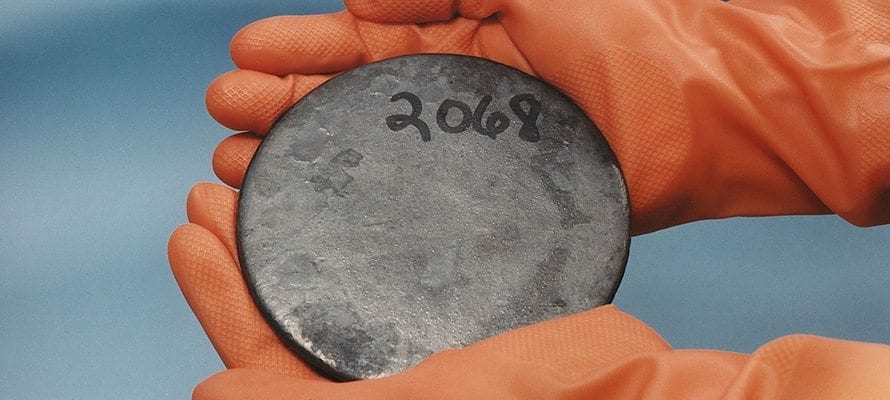By Warwick Grigor, 18 November 2017
After surging to new highs the leading indices took a breather mid week in a classic profit taking movement. This coincided with a weaker A$ and softer oil prices. We saw profit taking throughout the junior mining sector in stocks that had recently been very strong. Thus the volatility at this end of the market is on the rise. These are all symptoms of a good market.
A$ gold price is performing well
On Friday night the gold price jumped US$14.80/oz to US$1294/oz, a useful 1.16% improvement, but look at the A$ price and you will see it was up A$25.06/oz. The weakness in the A$ in recent weeks has been particularly useful to producers, such that our currency is almost back to the 2017 high seen early in July.
Dynamic markets require frequent realignment of expectations
The challenge at this point of the market cycle is to get in step with the current psychology. The bottom fishers are all making good profits, assuming they actually did pick the bottoms and didn’t come in too early. In many cases these guys go over-weight in their fishing, so they look for a chance to take some money off the table on an improving market. They provide stock for more cautious investors who wait, to buy on break outs of downtrends. As more and more people see that the direction has turned the question becomes “when do I get in? Do I buy now, or do I wait for pullback? Will there be a pullback”. Fear of falling prices is replaced by fear of missing out. That is the stage of the market cycle that we are entering now. The pendulum has swung in favour of a rising market and this will suck more buyers into the game. The search is on for fundamentals to justify the psychology, not the other way around. That is how emotional markets work.
Spot LNG prices up by 55% in two months
LNG spot prices are at a two year high, rising 55% in the last two months. Demand for clean energy in China is the apparent cause, with Chinese demand expected to show a 44% increase, YoY, in 2017. This is good for Queensland and companies like Santos and Origin. Maybe this is the driver behind stories of an $11bn bid for Santos. It is time to brush off the files on other gas companies as, along with the oil price, the trend is towards higher prices.
Lepidico running hard on new lithium process
As lithium stocks continue to attract interest there has recently been very strong interest in Lepidico (LPD). It is coming from the technology end of the business, with a process that treats high-quality lithium micas such as lepidolite and zinnwaldite. These have previously been thought of as uneconomic when compared with spodumene or brine deposits. Its L-Max® process allows recovery of battery grade lithium chemicals such as lithium carbonate and lithium hydroxide. The process involves the acid leaching of lithium mica slurry at atmospheric pressure and modest temperature followed by a series of purification steps, then precipitation of lithium carbonate. It avoids the energy intensive high temperature decrepitation and sulphate roasting needed for spodumene concentrates. LPD has been carrying out pilot scale work on the process to date with a mini-plant achieving 2-3 kg/hr of lithium carbonate. The next step is to achieve a 3.6t/hr rate, which would give capacity of 3,000 tpa, while also working on a Feasibility Study for a plant that could produce 15-25,000 tpa of lithium carbonate. Results of this are due by mid 2018, which could lead to construction commencing late in 2018, for commissioning late in 2019. There is the potential for this process to be a game changer for the lithium business as it could enable the exploitation of low cost supplies of mica rich feedstock. This material was previously of academic interest only. It is obviously being taken seriously by existing lithium companies as Galaxy Resources has just taken a 12% stake in the company. LPD aims to be fully integrated from mine site through to production of battery grade lithium materials. There has been a surge of interest in the shares this week, with volumes of more than 120 mill. shares going through in the first four days, and almost 2,000 trades per day on the ASX. The shares have moved from 3.7¢ to 8.4¢. Thus it has been a feeding frenzy for day traders. The market capitalisation is now $168m with the shares resting at 5.9¢. Whether or not there is short term value at these prices depends upon whether it is FOMO or fundamentals that is driving the share price. If the process moves to wide-scale commercialisation there is a chance that it will fill any gaps in future supply, at a low cost. So, you should keep it on your radar if you follow lithium stocks
Aussie business conditions at 10 year high
The recent NAB survey last week declared that business conditions in Australia are at a 10 year high. There is no longer any talk of what happens when the property boom turns down, so there is no fear of a collapse. It may soften, but there is no talk of collapse. There is no talk of rising interest rates any more as inflation seems to be under control. Everything seems set for steady sailing. Maybe its a good thing that the government is off in its own introverted world, letting the rest of us get on with our lives.
Citizenship shamozzle
The Federal Government in Australia is crippled by an issue that no-one really cares about. The amount of time and money being wasted on the citizenship shamozzle is a disgrace. It shows us the puerile nature of our politicians and how useless they really are. We should sack them all and appoint an administrator for the next 12 months – or longer. Our Federal parliament and the sitting members are the laughing stock of the world
The role of analysts
Previously I have written about the confused role of analysts in the finance sector. Well, the playing field is going to become even more murky, courtesy of regulators in Europe. The introduction of MIFID II (Markets in Financial Instruments Directive II) is soon to come into play, requiring asset managers to spell out how much they pay brokers for research, rather than having it hidden in overall fees. It could be said that this is part of the trend of asset managers relying less on brokers services and relying on their own resources instead, but the real reason is the increasingly invasive approach of the regulators.
Back in the late 1980s, when County NatWest was Australia’s # 1 broker, it had a team of highly paid, very professional analysts. It was the first time that a broking house was built around the quality research model. The analysts called the shots when it came to corporate deals, with quality control of the deal being paramount to investment bankers who focus on underwriting and advisory fees. The business model worked well. It was something that the high integrity analysts were appropriately proud of at the time. However, the goal posts moved with brokerage rates coming under relentless pressure.
Everyone wants the best information. In the past this has been described as the earliest information, but if you get it too early you run the risk of getting inside information. So, the best information should now be described as the best interpretation and analysis of that information that everyone has equal access to. But, how is an investor going to know if that information and analysis is any good ahead of risking his money?
The trouble with sell side analysis is that brokers view it as a cost centre. Very few organisations are prepared to invest in the 10 years that it takes to develop a first class analyst. When a downturn comes along the normal approach is to retrench the better, highly paid analysts in favour of juniors that are less expensive and are more malleable. Experienced analysts become more cautious while junior analysts are happy to lead the charge of the light brigade. They are more pragmatic, especially when they learn how bonuses can be tied to corporate fees (even though this is against ASIC policy). At the end of the day, brokers rarely offer high integrity research products because their business models do not facilitate the development of quality analysis.
With the changes coming with MIFID II, it is likely that analysts will become more marginalised. Investors won’t want to pay decent money for analysis when quality is so rare, and difficult to assess. Some larger fund managers will build their own analytical teams but they will suffer the same issues that brokers have had troubles with – the time and cost of developing quality research capability.
The regulators are motived by the desire to remove conflicts of interest as opposed to nurturing better quality analysis. They fail to understand that the markets can form their own views on conflicts of interest, and adjust accordingly. It would be fair to say that the experienced fund manager is more market savvy than your average regulator. They get to know how markets work and who you can trust, otherwise they don’t last. Overlaying a proscriptive and paternalistic regulatory regime designed by lawyers removes the market’s inbuilt ability to adjust to changing circumstances. It dumbs down the market. In the case of research, it is going to drive most of it from the market place. Markets will become less well-informed and we will see greater volatility and variance as stock movements become even more influenced by spin. They will become even greater casinos than they are now. But hey, the conflicts of interest will be removed, won’t they?











